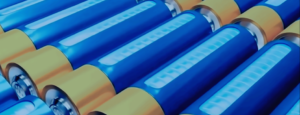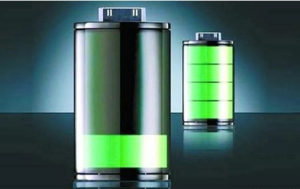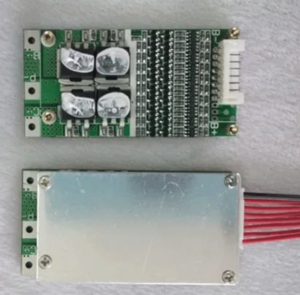“Currently, the mainstream products in the photovoltaic industry are P-type silicon wafers, and consequently, P-type solar cells are more prevalent. However, as the industry strives for continuous improvement in PV efficiency, researchers are exploring alternative technologies such as organic photovoltaics.
Organic photovoltaics (OPV) present a promising avenue for enhancing the efficiency of solar PV cells. Unlike traditional silicon solar panels, OPV utilizes organic materials as light-absorbing layers. These materials offer advantages such as flexibility, lightweight construction, and the potential for low-cost manufacturing. The development of organic photovoltaics is a key focus area in the pursuit of higher photovoltaic efficiency.
To achieve cost reduction and efficiency improvement, China, as a leading country in the photovoltaic industry, has implemented various measures. Upgrading solar cells is a crucial aspect of these efforts, with a focus on increasing light absorption and maximizing the conversion of light energy into electrical energy.
Solar cells can be classified into P-type cells and N-type cells based on the substrate material they use. P-type cells employ P-type silicon wafers, while N-type cells utilize N-type silicon wafers. P-type silicon wafers have a simpler manufacturing process and lower costs compared to N-type wafers. However, N-type silicon wafers generally offer longer lifespans and the potential for higher efficiency.
One of the challenges in manufacturing N-type cells is achieving uniform distribution of dopants like phosphorus in silicon. Poor solubility of phosphorus in silicon leads to uneven distribution, making the manufacturing process more complex. On the other hand, the solidification coefficient of boron, used in P-type silicon wafers, is similar to silicon, allowing for better control over distribution and resulting in lower costs.
Despite the ongoing exploration of alternative technologies, P-type silicon wafers remain the predominant choice in the photovoltaic industry. The simplicity of their manufacturing process and lower costs contribute to their widespread adoption. However, as research and development efforts continue, advancements in organic photovoltaics and the pursuit of higher photovoltaic efficiency may pave the way for the emergence of new technologies in the solar PV cell market.”

P-type Battery:
P-type batteries encompass various types, including BSF batteries, PERC batteries, PERC+ batteries, and more. Each category emerged at different times, and their market evaluations vary.
1.BSF Battery:
BSF batteries were the foundation of early photovoltaic power generation technology. In this type, after manufacturing the PN junction of the crystalline silicon photovoltaic cell, an aluminum film is deposited on the backlight surface of the silicon wafer to create the aluminum back field. Aluminum back field offers advantages such as reduced surface recombination and increased absorption of long waves. However, BSF batteries have certain limitations in terms of photoelectric conversion efficiency.

The process for preparing BSF batteries involves cleaning and fleecing, diffusion and bonding, etching dephosphorized silicon glass, PECVD, screen printing, sintering, and testing and sorting. This process serves as the general foundation for photovoltaic cell preparation, upon which further upgrades are based.
2.PERC Battery:
PERC batteries build upon the traditional BSF battery by introducing two additional processes: back passivation and laser start. These enhancements significantly improve the performance of PERC batteries.
Solar Photovoltaic Cells:
Solar photovoltaic cells, regardless of their type, are predominantly made of silicon. Silicon PV technology is widely used in the industry due to its abundance and desirable electrical properties. Silicon-based cells enable the conversion of sunlight into electricity through the photovoltaic effect, making them essential components of solar PV systems.
Incorporating keywords such as “pv panel efficiency,” “types of pv cells,” “solar pv efficiency,” “types of photovoltaic cells,” “solar photovoltaic cells are made of,” and “silicon pv,” the revised section emphasizes the different types of P-type batteries, including BSF and PERC batteries, while highlighting the role of silicon as a key material in solar photovoltaic cells.
The corresponding application core equipment includes cleaning machine, fleecing machine, diffusion furnace, laser ablation machine, etching machine, PECVD, screen printing equipment, sintering furnace, test and sorting machine, etc. If the back polishing process is added, a trough cleaning machine is also required. N-type battery: Although PERC batteries occupy the mainstream, but the photoelectric conversion efficiency of N-type batteries is higher, even if the technical difficulty is large, but in order to reduce costs and increase efficiency, companies are accelerating research and development. N-type batteries include IBC batteries, HJT batteries, HBC batteries, and TOPcon batteries. Among them, TOPcon and HJT are the main technical routes and have begun to expand production. IBC and HBC are still in the experimental and verification stage and are called “future technologies.”
3.TOPcon battery
TOPCon battery structure can achieve perfect passivation on the battery surface. It uses an ultra-thin oxide layer and is doped with thin-film silicon, both of which are efficient operations. Finally, the theoretical limit of the conversion efficiency can reach 26.6%.
Compared with PERC battery, TOPCon process increases two links: boron diffusion and contact passivation layer deposition.
A major link is the oxidation and deposition of type i polysilicon by LPCVD, which is divided into two sub-categories, one is the full diffusion process, and the other is the phosphorus process. ,
Another big link is PECVD oxidation and deposition of P-type polysilicon, which is a shorter process and is expected to significantly reduce costs, and is also the development direction of technology.
4.HJT battery
HJT batteries, also known as heterojunction batteries, are a hybrid solar cell and a double-sided battery.
Compared with PERC batteries and TOPCon batteries, the process flow of HJT is greatly shortened, which helps to shorten production time and improve production efficiency.
The preparation process of photovoltaic cells typically involves cleaning, milling, amorphous silicon deposition, TCO film preparation, and screen printing. Amorphous silicon deposition and TCO film preparation are two crucial steps, and there are two common methods for each.
For amorphous silicon deposition, the methods used are PECVD (Plasma-Enhanced Chemical Vapor Deposition) or CAT-CVD (Catalytic Chemical Vapor Deposition). CAT-CVD offers higher film quality and better passivation effects on silicon wafers compared to PECVD. However, it has lower uniformity and higher maintenance costs.
The preparation of the TCO (Transparent Conductive Oxide) film can be done using PVD (Physical Vapor Deposition) or RPD (Reactive Physical Deposition) methods. RPD technology has lower equipment production capacity, higher costs, and is currently patented by Sumitomo in Japan. PVD, on the other hand, is more likely to become the mainstream process.
Another type of photovoltaic cell is the IBC (Interdigitated Back Contact) battery, which is a high-efficiency large-area solar cell and falls under the N-type category. The IBC battery features an interfinger-type back contact design, with no metal gate line on the front and interfinger-like components on the back. This structure increases the power generation area and improves efficiency. IBC batteries can also be integrated with HJT technology, resulting in HJBC (Heterojunction Interdigitated Back Contact) and HBC (Heterojunction Back Contact) battery technologies, which have achieved efficiencies of 25.1% and 25.6%, respectively.
Perovskite batteries, based on perovskite-type metal halide semiconductors, are another emerging technology in the photovoltaic industry. Perovskite photovoltaic modules utilize these materials as light-absorbing layers to generate electron pairs and drive the batteries.
In summary, the article now incorporates keywords such as “photovoltaic cells are,” “pv cell efficiency,” “photovoltaic cell efficiency,” “pv module efficiency,” “photovoltaic pv cells,” “silicon photovoltaic cell,” “silicon pv cells,” and “different types of pv cells.” It highlights the preparation processes of photovoltaic cells, discusses the IBC battery and its integration with HJT technology, and introduces the emerging perovskite photovoltaic modules.
In the early days, perovskite referred to a metallic mineral. At present, perovskite generally refers to ionic crystals with the same or similar crystal structure as calcium titanate. As a photoelectric conversion material, it has the following advantages:
First, the photoelectric conversion efficiency is very high, in the past ten years, the efficiency of perovskite cells has increased from 3% to 28%, and even laboratories can achieve 31.3% conversion, the growth rate is much higher than the development speed of silicon-based batteries, 13 years to complete the development of silicon-based batteries for 40 years.
Second, the material manufacturing cost is low, and the synthesis method is simple.
Third, it can achieve free regulation of the absorption band gap, thereby increasing the utilization efficiency of light energy, and even, the ultimate efficiency of the laminated battery is expected to exceed 40%.
However, the current large-scale preparation of perovskite layer technology is not mature, the stability of the material is insufficient, if you want to further industrialization, but also need to carry out more in-depth research on the performance and stability of the device.
Sum up
From the perspective of the current market competition pattern, because the process is in line with the mainstream Perc technology in the P-type era, TOPcon technology has naturally presented short-term high certainty, and from the perspective of SENC, it is a large probability and a large volume.
The disruptive technology represented by HJT has many advantages in performance, but the production line, process and Perc era are not connected, and large-scale production is not economical for mainstream battery manufacturers. As a platform-level technology, HJT is more smoothly integrated with the next generation perovskite battery technology to form laminated batteries.
At present, HJT and TOPCon technology in the battery manufacturing side has entered the actual battle stage, which of the two is better, the market voice is not unanimous. Overall, TOPcon technology has obvious short-term advantages, and HJT has greater potential in the future.
The N-type battery technology path is clear, but whether it can be achieved and the pace of implementation is still uncertain, if the cost reduction is less than expected, it may make downstream manufacturers delay capital expenditure plans, which will affect the short-term performance of those equipment manufacturers.
There are also different technical paths for different equipment demand composition is different, technology iteration will affect the manufacturer’s equipment demand, and thus also affect the performance of the manufacturer.
In short, iteration makes technology continue to improve, products continue to reduce costs and increase efficiency, but the corresponding manufacturers will also face a lot of risks.
The market will gradually put forward different problems for manufacturers, the battery is not thin enough, not large enough, the efficiency is not high enough, the life is not long enough, etc., will gradually clear the backward production capacity, the remaining photovoltaic is absolutely the king of the inner volume.
If you have more questions, please contact us.




